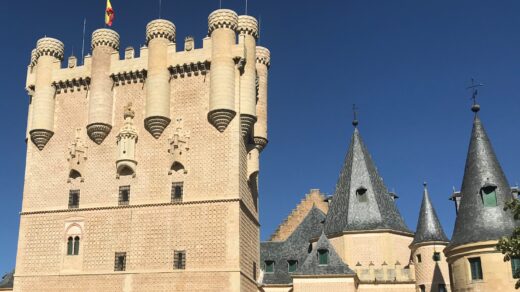Connecting a Driver-Based Forecast to Strategy and Execution
Forecasting is Not About Predicting the Future
Our objective in building a driver-based forecast (“DBF”) model is to improve the clarity of the connections between our financial results and the activities that drive them.
Planning is about producing plans which constantly change, not about creating a plan which does not (Morlidge and Player, 76). When we create a DBF model, we are trying to enable the creation of grounded and connected strategic and financial plans.
To understand what we are trying to create with the driver-based forecasts, it’s helpful to have a clear understanding of what a good forecast is not:
• A prediction: since the purpose of business forecasting is not to foretell the future but to change it.
• A commitment: since forecasts need to change to reflect changes in the environment.
• Precise: it is neither possible nor necessary (54).
The main requirement of a good forecast is that it should be actionable. This means that it should have the minimum amount of detail required to provide management with a clear understanding of what is driving future performance (49).
Drivers
“The greatest advantage of using a driver-based forecast is identifying the handful of key drivers that will make everything else flow“
Steve Player, Paige Leavitt, and Rachele Collins (CFO Magazine)
When we talk about a forecast being driver-based, we mean that we have disaggregated the financial results into underlying units that can be projected separately.
For example, product revenue can be broken down into two drivers: price per unit and number of units. If we want to grow revenue, we can make independent plans to increase the volume (number of units) or to increase the price (or average deal size).
From there we might further break down ‘number of units’ into its drivers: number of customers and units per customer. We might from there develop different initiatives to increase the number of customers and to increase the average quantity each customer buys. Or we might break down ‘number of customers’ into new customers, returning customers, and lost customers, and then have one initiative to acquire new customers and another initiative to reduce the churn of existing customers. Acquiring new customers could be broken down further . . . But you get the picture.
Current Trends
“Unless you change direction, you will end up where you are headed”
Shigeo Shingo
When we build a driver-based forecast model, we pull in several periods of historical data to tell us the trends. It’s important to break this down into the same drivers we want to forecast.
You can think of drivers as balls flying through space. They have a trajectory, a velocity, a rate of acceleration. Unless some force is applied to that ball through space, it is likely to continue going as it is.
That force may be external and outside of our control, or it may be one of our initiatives we are executing in order to apply a force intentionally to nudge its direction, speed it up, or slow it down. A DBF model helps us see what the financial results will be if we let the drivers continue at current course and speed.
Strategy is About Applying Force to Change the Outcome
“An organization’s strategy is nothing more than the intentional decisions a company makes to give itself the best chance to thrive and differentiate from competitors“
Patrick Lencioni
One of my favorite discussions of strategy is in The Advantage by Patrick Lencioni. In “Discipline 2: Create Clarity” he lays out 6 Aspects of Clarity which are:
- Why do we exist?
- How do we behave?
- What do we do?
- How will we succeed?
- What is most important, right now?
- Who must do what? (Lencioni, 77)
A good strategic framework should answer questions 4-6 clarifying strategies (q4), drivers (q5) and initiatives (q6) and enabling the DBF to demonstrate how key activities and their metrics connect to the achievement of desired financial results.
Using the DBF Model to Select Drivers
“Strategy is about making choices, trade-offs; it’s about deliberately choosing to be different.”
Michael Porter
As we start to formulate our strategy, the DBF model can help to identify where our efforts can realistically have a meaningful impact on our results.
Our strategy to move certain drivers often means that we cannot impact others. Competitive strategy is about being different. It means deliberately choosing a different set of activities to deliver a unique set of values (Porter, 4). We can model various alternatives to see which represents a realistic path to desirable results.
Using the Model to Validate The Connection
“A goal without a method is nonsense.”
Edward Deming
Another important use of the DBF model is verifying that completing the initiatives will lead to achieving the goals. Once each initiative has a clear target and due date, the projected impacts can be modelled to see if the driver would be sufficiently acted upon to achieve the goals. In order to focus on the most important goals, we need to narrow the number of initiatives we are trying to accomplish (McChesney).
Iteration
It’s not failure, it’s intentional innovation”
Heidi Neck
I often say the only way to build a good forecast is to first build a bad one. Your first attempt to identify all the key levers in the business and to find the meaningful trends will be far from perfect.
Our objective is to create a new navigational instrument to help us achieve our goals. It will take time to refine it, yet it will prove useful from the start.
Likewise, we are making assumptions about how to execute initiatives to act on drivers and how impacting the drivers will influence our financial results.
Some of these assumptions will prove wrong and we will have to course-correct. Further, some initiatives will not be perfectly executed. If we maintain an objective DBF model that shows where we are headed, then we can identify the “countermeasures” needed to bring us back on course.
Changing the Conversation
“Managing a company by looking at financial data (lag measures) is the equivalent of driving a car by looking in the rearview mirror.”
Chris McChesney
Ultimately our four aims with the strategic framework and DBF model are:
- To create a good connection between the financial goals we want to achieve and the actions we need to take to bring them about;
- To provide a new tool to use ongoing to help us see where we are headed and how to change course to reach our target;
- To change the way we talk about our financial results – from a rearward facing discussion about variances to plan, to a forward-looking and action-oriented discussion about where we headed.
- To provide a set of standard tools across pillars that support our by-pillar strategic thinking with a common approach that gives a level of clarity to teams across the organization about the key drivers of growth that we are looking to impact.
As we update the DBF model with current results, it becomes our scoreboard for whether we are achieving the initiatives, whether that is having the expect result on the drivers, and how our current outlook compares to our target.
“The future isn’t just a place you’ll go. It’s a place you will invent.”
Nancy Duarte
Cited Works:
- S. Morlidge and S. Player, Future Ready (Wiley, 2012)
- P. Lencioni, The Advantage (Jossey-Bass, 2012)
- M. Porter, What is Strategy? (Harvard Business Review, 1996)
- C. McChesney, The 4 Disciplines of Execution (FranklinCovey Co., 2012)



1 Response
[…] Previous Driver-Based Forecasting & Strategy […]